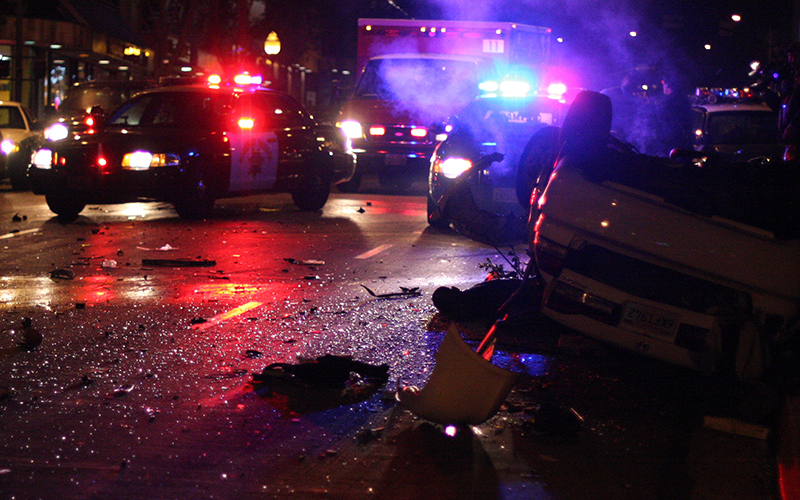WASHINGTON – Motor vehicle crashes, injuries and fatalities continued their steady six-year rise in Arizona in 2016, according to the most recent data from the state’s Department of Transportation.
At a time when the state’s population grew by an average 1.4 percent a year, the number of vehicle crashes rose an average 2.8 percent a year between 2011 and 2016, while injuries rose 1.8 percent a year and fatalities increased by 4.1 percent per year, according to the DOT’s Annual Crash Facts Report released last month.
The cost of those crashes mounted in the billions each year, although a recent change in how the state measures those numbers makes a direct year-to-year comparison difficult.
Experts point to several possible reasons for the rise in crashes, ranging from lax state laws on highway safety to bad drivers, a factor illustrated most recently by the latest in a string of wrong-way driving accidents that led to a fatality on Interstate 17 in Black Canyon City.
An Arizona Department of Public Safety report said troopers had already responded to 840 wrong-way driver reports as of June 30 this year.
But driver error is only part of the problem. The National Safety Council said in a report released last week that Arizona’s road safety laws rank 48th in the nation.
“Arizona received an ‘F’ on the road safety section, largely because they’re not doing a great job protecting child passengers,” Deborah Hersman, president and CEO of the Safety council, said after the release of the report last week.
She pointed to a few specific areas that Arizona should consider, adding that the state has “a lot of room for improvement.”
“Arizona can also address vulnerable road users, making sure the pedestrians, cyclists and motorcyclists are better protected, helmet laws for children riding bicycles and an all-rider helmet law for motorcyclists,” she said. “Arizona does not meet the requirements for distracted driving as well.”
-Cronkite News graphic by Joe Gilmore
The state took steps toward reducing distracted driving with the passage this year of a law that makes it illegal for drivers with learner’s permits to use wireless devices behind the wheel.
Arizona state Sen. Steve Farley, D-Tucson, a co-sponsor of the bill and longtime advocate for distracted driving legislation, said last week that he welcomed the new law but that he plans to keep fighting for a broader ban. But he noted that “people have the ability to stop this without a law.”
With or without stiffer laws, some state officials said that driver common sense and poor driving still come into play in the rise in accidents.
Quentin Mehr, a Department of Public Safety spokesman, said that “DPS troopers are out there every day” trying to make Arizona safer, but drivers need to start taking more responsibility when they are on the road.
A “majority of collisions are caused by driver behavior,” Mehr said.
The Crash Facts Report for 2016 said there were 126,845 total crashes on Arizona roads last year, resulting in 56,636 injuries and 962 deaths. The report said those crashes may have cost as much as $10.7 billion in 2016.
That is up sharply from the estimated $3.8 billion valuation of crashes in the previous year. But the seemingly remarkable jump can be explained in part by a change in the sources that ADOT uses to compile the estimated crash costs, with new sources that put “different estimated valuations” on vehicle crashes, according to department spokesman Doug Pacey.
But there is no doubt the rising number of accidents drove up costs in 2016, Pacey said in an email.
“Even if the average economic cost per incident stayed the same from 2015 to 2016, the rise in fatalities, injuries and vehicle crashes would have boosted the estimated economic figure,” Pacey said.
If the 2016 crash numbers were figured using the old sources – which set different values on the cost of a life or a particular injury – the damages in Arizona would have been closer to $4.1 billion, representing a 7.8 percent increase, slightly higher than the national average.
Mehr said his department is “working daily to educate the public.” He specifically mentioned distracted driving, seatbelt issues and impaired driving as areas where “driver responsibility” could have a major impact. Particularly impaired driving.
“Call a taxi, but don’t get behind the wheel,” Mehr said.
